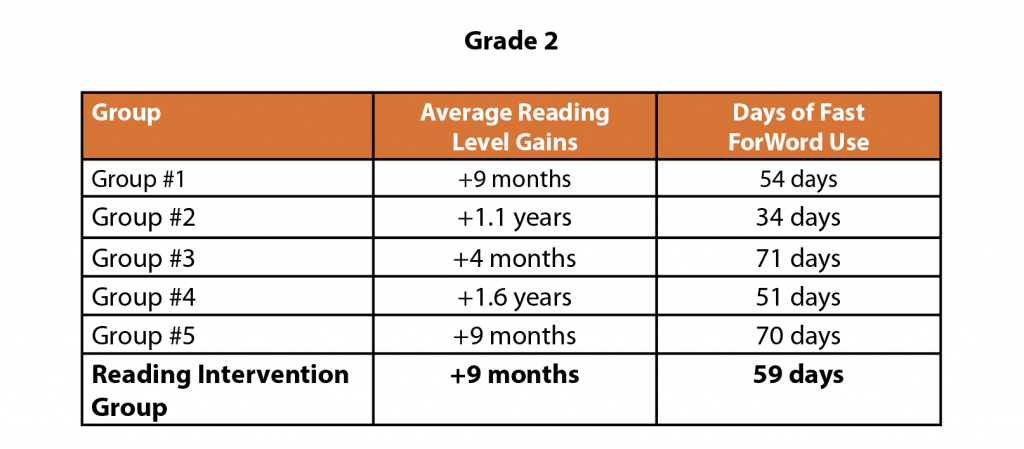Simma started small, buying Fast ForWord student licenses as pockets of funding became available. “We formed a reading intervention group and began using the Fast ForWord program with students who were at risk of reading failure. We saw that first group of 20 students make gains, so we renewed for another year, bought more licenses, and began using the program with our students in special education, too,” he said.
Challenges
Solution
Populations served
Results
From a high-poverty environment to a lack of literature in the home, there are a number of factors that can impact a child’s readiness for reading. The question is, how does a school quickly fill in gaps in foundational reading, language, and cognitive skills to help its most vulnerable learners catch up, once and for all?
“Each child is prepared differently for school and some children receive no preparation at all. Many children who arrive at school have never been read to at home and they don’t come from print-rich environments,” said Bobby Simma, principal of Perkins-Tryon Elementary. “I had used the Fast ForWord program in a previous school district and saw the difference it made in students’ reading skills. So, when I came to work here in 2008, one of my top goals was to bring that program to this school.”
Simma started small, buying Fast ForWord student licenses as pockets of funding became available. “We formed a reading intervention group and began using the Fast ForWord program with students who were at risk of reading failure. We saw that first group of 20 students make gains, so we renewed for another year, bought more licenses, and began using the program with our students in special education, too,” he said.
In 2013-14, the school applied for and received a grant from the Donegan Burns Foundation and combined that with Title I funding to purchase a perpetual site license. Now all students in grades 1-2 work on the Fast ForWord program on iPads for 30 minutes a day, five days a week.
Leveraging neuroscience to target the root causes of reading struggle
The Fast ForWord program is a neuroscience-based intervention that uses a unique three-step approach to deliver fast gains to struggling students. It provides them with the foundational language and cognitive skills, intensive practice, and guided reading help that they need to catch up, once and for all.
“In my career, I’ve seen a lot of curriculum programs come and go, but I’ve never seen anything like the Fast ForWord program. It was developed by neuroscientists, which is why it’s so different from other reading interventions, and the research behind the program is fascinating,” said Simma. “As students progress through the content, we see good gains on their Reading Progress Indicator scores. I’m sold on the program’s effectiveness and that’s why I want every student who goes through this school to touch it. It’s probably the most effective product I have come across in my 36 years of public school work.”
The exercises within the Fast ForWord program are designed to adapt to each learner, ensuring that students develop the critical skills they need to become proficient readers.
“Students love the game-like format,” said Simma. “It’s engaging and they enjoy it.”
Helping students make fast and lasting gains
Perkins-Tryon Elementary uses Reading Progress Indicator, an individually administered reading assessment that is correlated to national reading assessments, with all students in grade 2. From late August 2018 to late January 2019, second grade students achieved average reading level gains of 1 year in only 57 days of Fast ForWord use.
“We’ve seen great gains in students’ reading achievement with the Fast ForWord program,” said Simma. “Plus, our intervention second graders achieved gains of 9 months in only 59 days of product use and they moved from the 26th to the 41st percentile in reading, which is outstanding for a group of kids who have had a hard time in reading.”

Achieving a positive return on investment
“For schools just starting out with the Fast ForWord program, it’s okay if you have to start small,” said Simma. “Even if you can only get a small number of students on the program, you are helping those kids! As we’ve seen with our students’ results, it’s well worth the investment and I consider us fortunate to have the Fast ForWord program in our school.”